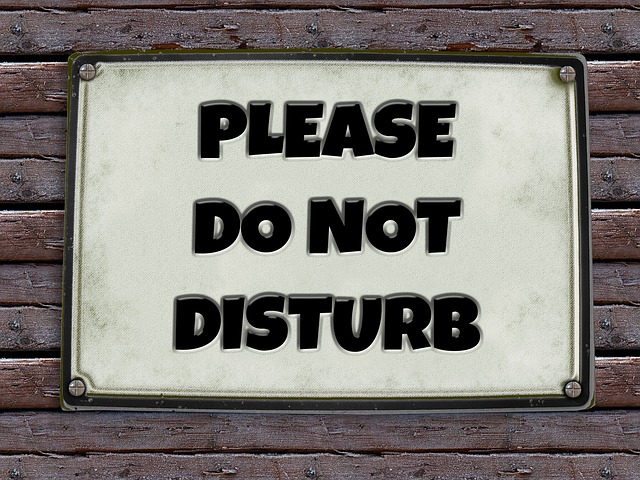We all deal with work interruption on a daily basis. Whether it’s our fault or not, something pops up to take us out of our workflow. It might be internal, meaning the problem is us and our ability to focus. It may be external, that we find ourselves lacking the resources or tools we need to carry on with work. Whatever the reason, the person in charge has the ability to fight to tackle work interruption. Here’s how you do it.

Tracking work interruption
If you’re worried about how much time is spent in the office not doing work, then you be more keen in spotting it. So do your employees. A lot of the time, they’re as annoyed about something getting in the way of their tasks as you are. Train everyone in the use of an interruption log. It takes an average of eleven minutes before someone or something takes their attention away from the job. By tracking interruptions and their sources, you can more carefully divine what steps to take next. Fighting interruptions from sources where they’re not really happening is just a waste of everyone’s time, after all.
Stress and demotivation
Internal interruption usually comes as a result of your employees being disengaged from their work. Don’t leap to assume that this is because they’re lazy. Instead, think about what pressures might be acting on them. If they’re messing up more often than usual and they’re visibly concerned about it, it’s likely stress. Otherwise, it may just be demotivation. Employees can’t summon up motivation at will. You have to help them along by providing everything that the workplace is supposed to be. Give support. Reward good work. Invest time to build their skills and encourage them to grow in their work. Poor motivation will cause you a lot more problems than just interrupting work, so you need to nip it in the bud when possible.

Distraction
The most common external source of work interruption is simple distraction. For example, the internet is a great drain on productivity when it wants to be. Address any wrongful browsing activity with the staff and block sites that prove distracting through the work day. Ask them to monitor their communication use, as well. Emails, conversations and the like all have their time. But if the employee knows what their task is and that they should focus on it, they shouldn’t be distracted with new information every minute or so.
Poor prioritizing
It can be just as much a problem when the employee doesn’t know what their task is and what to focus on. We all have moments when we feel like our energy is being pulled in seven different directions. If we’re being asked by several different people to do different tasks, it can waste time just thinking of what to do next. Help employees focus on bigger priority tasks. Do this by making it clear on a regular basis what the current objectives of the day are. Teach them how to prioritise their own workloads and keep a visual to-do list. Time management is about more than just not being late. Help them understand that.

Communication issues
We’ve already said how unnecessary communication can be a big interruption and build up to take a lot of time out of the day. One reason all this unnecessary chatter happens is because there are problems with communication in the office. The time that is needed for team members to share and contribute isn’t used effectively. A lot of staff members might misinterpret office meetings for a briefing session from those in command. You need to re-order how you tackle them. Give everyone the opportunity to state and double-check their priority for the day and what they might need. This can help you direct who should help who with tasks immediately and which can wait.
Missing resources
People might very well need help from another employee or they can’t get their job done. Just as likely, they will need certain resources or information and being unable to attain it can waste even more time. Missing documents and resources are a big problem in any office. For things like supplies, you should ensure a daily inventory is taken so you know when to restock. For information and files, consider taking the route of going paperless. It’s a lot easier to find tagged and well-named files as opposed to physical documents that take a lot of space and organising.

Tech issues
Sometimes, it’s more physical issues with your tech that can be the problem. The key is to always have back-up on your side. For example, with IT network issues. It’s best to prioritise proactive IT maintenance with professionals to help. If your internet goes down, it’s a smart idea to have another connection option waiting. Smaller businesses can make use of pay-as-you-go dongles or hotspot wi-fi connections. You can even protect your business from impact of the rare yet very costly power cut. It’s a big investment, but a power cell station can ensure that your business isn’t left in the dark.
Absences
There’s nothing you can do to stop absences if they’re genuinely needed. People will have special occasions or a hundred valid uses for times off. They are also entitled to sick leave. But you have to be careful about managing absences. Not only are they a short-term problem, but they can also be an indicator of long-term motivation issues if the reason for them is less than valid. Look into whether certain employees had a predilection to more absences than others and why that might be. Similarly, consider stopgap options to take their place so they don’t halt the workflow of the office. These options include things like cross-training your employees or keeping in contact with a temp agency.
Work interruption can take seven working hours a day from your business. That’s a cost to productivity you can’t afford. Work hard to identify those interruptions or you will regret it.
